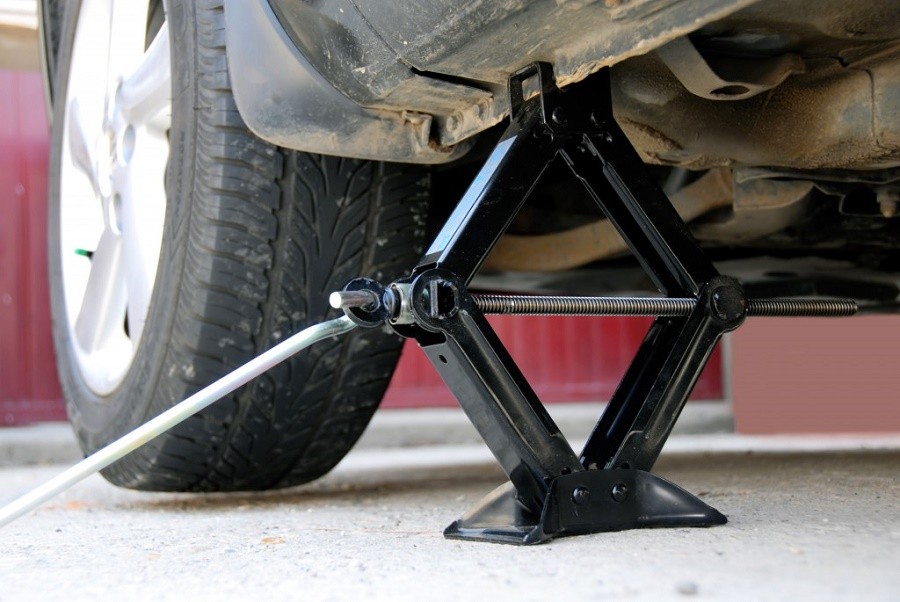
How to use car jacks and jacks
Since the invention of the modern automobile, car owners have used jacks and jacks of some form or form to raise their cars for maintenance. Whether it's removing a flat tire or accessing hard-to-reach parts under a car, people use jacks and jacks on a daily basis. While these tools can be very safe to use, there are a number of safety steps and regulations that must be followed to ensure that everyone working under or around the vehicle is as safe as possible.
Below are the steps to follow each time the jack and stand are used, regardless of the type or style of jacks used.
Part 1 of 1: Using Jacks and Jacks
Step 1: Always refer to your vehicle owner's manual for the recommended use of the jack: Most car, truck and SUV owners will only use a jack and stands if they are trying to change a flat tire. Engine repair, catalytic converter replacement, wheel bearing replacement, brake line flaring, and crankshaft oil seal replacement are just a few of the many jobs that require jacking up the vehicle.
Before using any jack or stand, check the following information in your vehicle owner's manual.
Check the location of the jack stands: every vehicle has a recommended jack location to safely raise the vehicle. On passenger cars and many SUVs, this is indicated by an arrow or a marking indicator, usually located on the side of the vehicle. The manufacturer uses this placement for safety and leverage purposes.
Check the maximum load capacity of any jack and stand you are using: While most car manufacturers will place a portable jack for use with that individual vehicle, you should always check the maximum load capacity of any jack and stand you are using. It can be found on the jack itself, and the car's weight can be found on the inside of the driver's door.
Step 2: Only use the jack for lifting - always use jacks for support: Jacks and stands should always be used together. While most vehicles do not come with an auxiliary jack stand, you should ONLY use this type of jack to replace a flat tire. Any other application or use of the jack must always be accompanied by a stand of the same size. Another safety rule of thumb is to never go under a vehicle that does not have a jack and at least one jack stand to support the vehicle.
Step 3: Always use the jack and stand on a level surface: When preparing the vehicle for use of the jack and jack stand, be sure to use them on a level surface. Using the jack or stand on a sloping or elevated surface may cause the stand to fall.
Step 4: Always use a wooden or solid wheel chock to support the front and rear wheels: Before lifting the vehicle, always use a block of wood or a heavy wheel chock to secure the tires. This is used as a safety measure to ensure that the weight is evenly distributed when the vehicle is lifted.
Step 5: Place the vehicle in Park (in automatic mode) or in forward gear (in manual mode) and apply the parking brake before lifting the vehicle.
Step 6: Install the jack in the recommended location: Make sure the jack is centered and begin to slowly raise the jack to make sure it hits the right spot perfectly. As soon as the jack touches the lifting point, make sure that there is nothing or body parts under the car. Continue to raise the vehicle until the desired height is reached.
Step 7: Position the jacks at the desired support location: Refer to your vehicle owner's manual for the location of the jack legs.**
Step 8: Slowly lower the jack until the car is on stands: The car must be on jacks; not the jack itself if you are working under a car. Slowly lower the jack until the weight of the vehicle is on the jack stand. Once this happens, slowly raise the jack until it supports the vehicle; but does not continue to raise the car.
Step 9: Gently rock the car to make sure it is firmly on the jack and jack stands before working under the car:
Step 10: Perform maintenance, then raise the jack, remove the jack legs, then lower the vehicle safely to the ground: Always follow the manufacturer's service instructions for exact instructions on how to lower the vehicle. Be sure to remove any wooden blocks or any other supporting elements after the vehicle has been lowered.